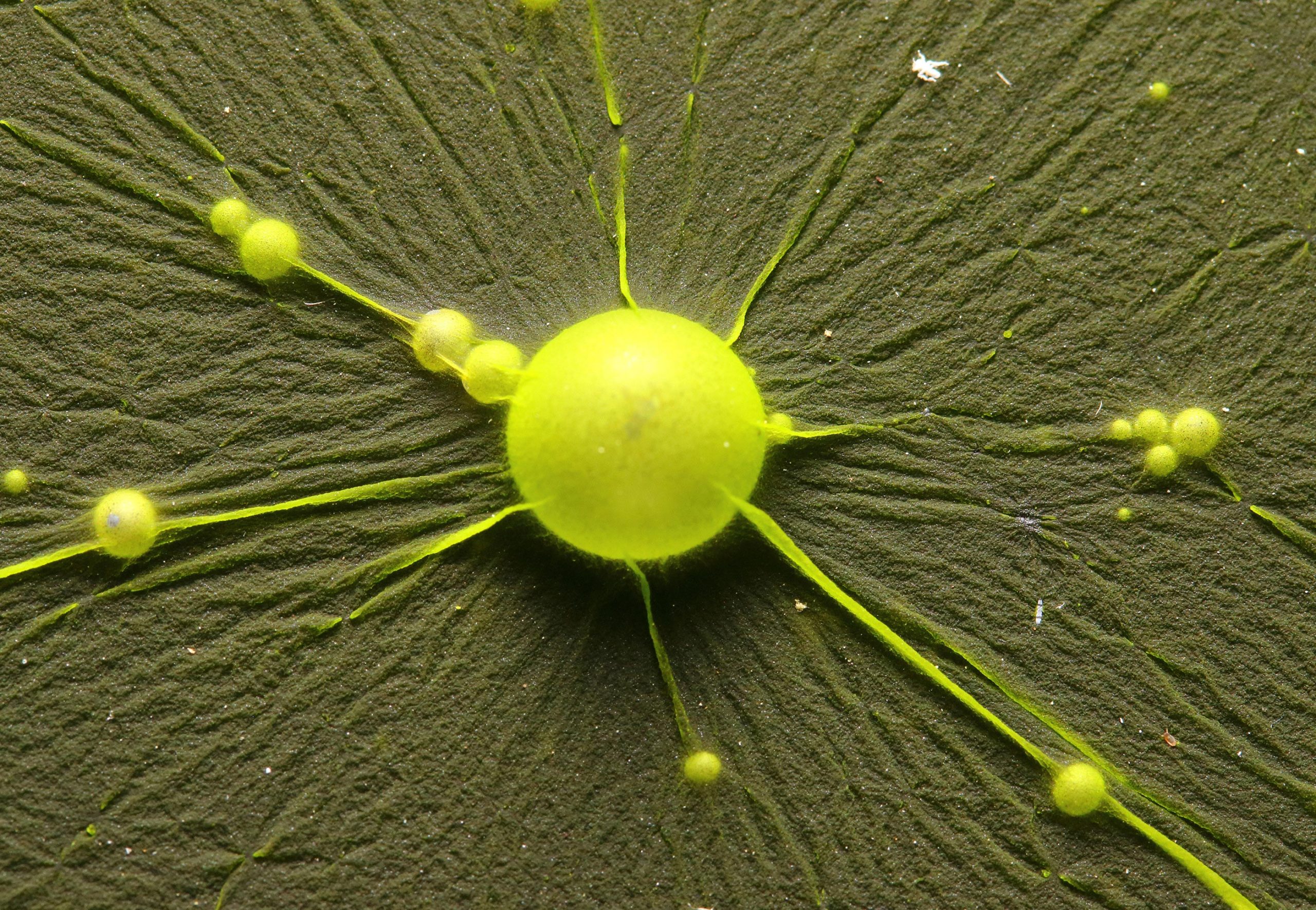
In a surprising turn of events, a team of scientists exploring the volcanic coast of Italy stumbled upon a new cyanobacteria strain they nicknamed Chonkus.
Discovered near the island of Vulcano, Chonkus has unique traits that make it a promising candidate for carbon capture — it grows rapidly when exposed to CO₂ and sinks to the ocean floor naturally.
The researchers, including team members from the Wyss Institute at Harvard University and Align to Innovate, believe that Chonkus could change the way we approach carbon sequestration. As Dr. Max Schubert noted, "It's basically built for industrial-scale decarbonization right out of the box."

The white spots in this microscope image of the "Chonkus" cyanobacteria likely represent carbon-dense granules produced by the algae, which may explain its rapid growth in carbon-rich environments and its tendency to sink quickly.
Uncovering "Fat" Algae for Carbon Capture
The discovery was made by a coalition of scientists led by Max Schubert, Ph.D., a former researcher at the Wyss Institute, now with Align to Innovate.
Driven by a hunch that some organisms thrive in carbon-rich environments, Schubert organized an expedition to Vulcano, where underwater volcanic vents provide natural carbon emissions.
His colleague, Braden Tierney, Ph.D., joined him to lead the expedition, securing funding from SeedLabs and enlisting support from several international research institutions.
In these carbon-loaded waters, the team found Chonkus, an algae with an unusual trait: it sinks. Unlike most algae, which float freely, Chonkus has a dense structure, causing it to fall to the ocean floor.
This unique trait could be a game-changer for scientists looking for ways to capture and store carbon. Schubert described its texture as "green peanut butter," highlighting its potential for use in biomanufacturing processes.
>> In Other News: Vortex Energy’s Collaboration with the University of Alberta Receives MITACS/NSERC Funding of $1.08 Million
Scaling Up Chonkus for Carbon Capture
Back in the lab, Schubert and Tierney replicated Chonkus's ideal conditions, cultivating it in a warm environment with ample light and a high CO₂ concentration.
The team identified two strains, with UTEX 3222 standing out. This strain, affectionately nicknamed “The Chonk,” grows into densely packed colonies, making it highly efficient for lab cultivation.
Chonkus is more than just a large algae; it carries an increased carbon content, thanks to the large granules it stores in its cells. Additionally, its natural ability to sink makes it easier to harvest and concentrate, a major advantage in algae production.
This feature could help reduce production costs by up to 30%, as it minimizes the need for drying and processing. Tierney remarked that "Many of the traits we observed in Chonkus aren't inherently useful in their natural environment, but they're very useful to humans."

A New Algae Solution for the Future
The potential applications for Chonkus are vast. In addition to carbon sequestration, the algae could support sustainable production of omega-3 fatty acids, antioxidants, and algae-based supplements.
Its high-density growth and carbon-capture abilities make it ideal for biomanufacturing, potentially transforming the carbon capture industry.
Schubert and Tierney are optimistic about Chonkus’s future. To encourage further research, they made samples of UTEX 3222 available through the University of Texas’s Culture Collection of Algae, allowing scientists worldwide to study its unique properties.
Additionally, Tierney co-founded The Two Frontiers Project, a non-profit organization dedicated to discovering microbial species with beneficial traits for carbon capture and other ecological applications.
Responsible Deployment of "Superbugs"
The promising capabilities of Chonkus come with a call for caution. Renowned Harvard and MIT professor George Church, a co-author of the study, emphasized the need for responsible handling of such potent biological tools.
He noted, "The traits inherent in naturally evolved strains like Chonkus can be game-changing, but it's critical to ‘build the seatbelts before you build the car.’"
Church’s team is actively working on containment strategies to ensure that Chonkus stays within controlled environments, preventing unintended ecological impacts.
With its natural ability to store carbon and ease of cultivation, Chonkus could soon play a central role in environmental efforts to mitigate carbon emissions.
For scientists, policymakers, and environmental advocates alike, this algae represents a new avenue for carbon capture — and perhaps a turning point in the fight against climate change.
Subscribe to the newsletter
Daily decarbonization data and news delivered to your inbox
Follow the money flow of climate, technology, and energy investments to uncover new opportunities and jobs.
Latest issues
-
Inside XCF Global's $300M Bet to Double U.S. SAF Output
Inside This Issue ✈️ Inside XCF Global's $300M Bet to Double U.S. SAF Output ⚙️ Capsol Technologies Signs MoU with US Utility to Deploy CapsolGT® for Low-carbon Gas Power Generation 🏭 Babcock &...
-
64 Carbon Projects Were Stuck. Texas Just Unlocked Them
Inside This Issue 🛢️ 64 Carbon Projects Were Stuck. Texas Just Unlocked Them ⚙️ In Ohio, Hydrogen Industry Presses on Despite Federal Uncertainty 🧲 Agami Zero Breaks Through With Magnetic Hydrogen...
-
This U.S. Plant Might Change Aviation Forever
In This Issue 🛫 A Georgia Plant Just Cracked Aviation's Fuel Puzzle 📉 CO2RE And ERM Release 2025 Update On Greenhouse Gas Removal Costs 🔗 Abatable Partners With BlueLayer To Streamline Corporate C...
Company Announcements
-
Eden Prairie, MN – Carba, a leading biocarbon technology and carbon removal company, today announced the close of a $6 million investment round led by Rusheen Capital Management and Canopy Generati...
-
COLUSA COUNTY, Calif., Dec. 4, 2025 /PRNewswire/ -- CarbonZero.Eco, a Silicon Valley–based, venture-backed climate technology startup pioneering regenerative agriculture and carbon removal through ...
-
NORTH VANCOUVER, BC, Dec. 7, 2025 /PRNewswire/ - Hydron Energy, a leading innovator in clean fuel and gas separation technologies, today announced the successful demonstration of carbon-negative Xe...
-
Facility will utilize Babcock & Wilcox’s SolveBright™ solvent-flexible CO2-capture process Full notice to proceed anticipated in March 2026 Baseload power demand is driving the need for ...